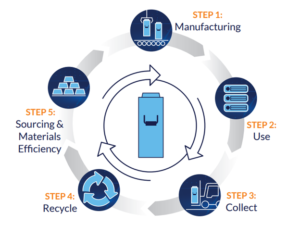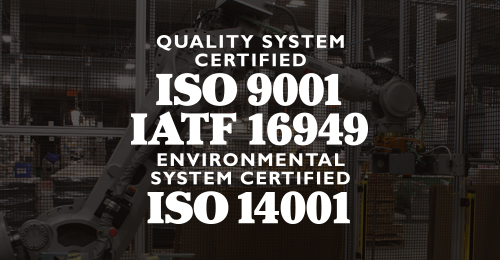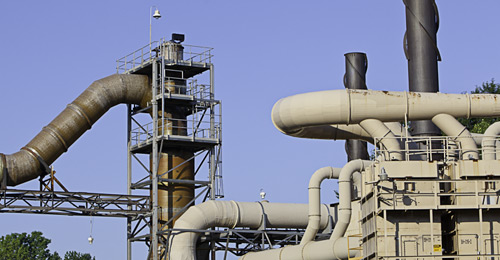Environmental factors, especially sustainability, are fundamentally important in considering battery technology. Battery recycling success rates are driven by a number of factors, such as the battery’s complexity (the more componentry, the more difficult recycling is), whether an established network exists to collect and process used batteries, and the market value of the recycled material to create new products.
Lead Batteries – 100% recyclable
The recycling and sustainability of lead batteries is a success story. Virtually 100% of a lead battery’s three basic components – lead, plastic, and acid – are recyclable. Today, lead batteries are the most recycled consumer product with a recycling rate of 99% (1) Not only are they recyclable, but also sustainable, meaning the components are of great value. It is economically profitable to recycle them for use in new batteries. That creates an incentive and a substantial financial credit for the customer. This is the pinnacle of a circular economy. In short, lead batteries never really die; they get remade.
LEAD BATTERY SUSTAINABILITY MODEL
Lithium Batteries – 15% recyclable
Currently, the percentage of lithium batteries that are recycled is less than 15%. (2) To boost that number, the U.S. government is investing a great deal of resources to assist companies in finding solutions. Although several companies are exploring ways to meet this challenge, there remains no full-scale North American commercial operation that has shown success in recovering metals for reuse in new lithium batteries similar to the overall sustainability provided by lead battery technology. The complex design and mix of materials in a lithium battery compound the recycling challenge. Plus, there’s still a cost associated with the recovery of these metals versus the financial credit that lead delivers.
Further challenging the lithium battery industry is the multiple lithium chemistries in the marketplace. Batteries with a higher concentration of nickel and cobalt (NMC) are more valuable than a safer chemistry like lithium iron phosphate (LFP). Current commercial operations will either break down the cells using a water- or heat-based process. The result of these processes depends on the technology.
For NMC products, the process produces three basic materials: shredded copper and aluminum commonly referred to as stock-feed, mixed plastics, and a black mass. If the black mass contains adequate valuable metals, it results in a nickel-cobalt cake that can be sold to a refinery for further extraction. Specific to lithium iron phosphate (LFP) batteries, there currently is no value for the inert end materials, and it is sent to landfills. Should companies move away from nickel and cobalt due to sourcing issues, the value of the black mass decreases. If companies can commercially prove that lithium and other metals can be successfully extracted from this black mass as battery-grade high-purity metals, only then will they be reused in the building of new batteries – at a cost. It is valuable to note that lithium battery disposal/recycling is changing regularly as research is being completed and operations are scaled for commercial production. This will help the supply chain of these materials, but not create a financial value compared to lead.
Today’s world demands sustainable solutions. While there have been promising developments in lithium technologies, Deka lead batteries are a sustainable, reliable, proven, and safe choice.
- SmithBucklin Statistics Group. “National Recycling Rate Study.” Battery Council International, November 2019.
- Jacoby, Mitch. “It’s time to get serious about recycling lithium-ion batteries.” Chemical & Engineering News, 14 July 2019.
Phone: 610.682.3263 E-mail: reservepowersales@dekabatteries.com
Follow us on LinkedIn @ East Penn Manufacturing Co. Reserve Power


